The Post-COP 29 Sharing Program, held on December 9, 2024, at Dhokaima Cafe, brought together key stakeholders to reflect on Nepal's participation in COP29. Organized by CANSA Nepal and CEN in collaboration with OXFAM in Nepal, Prakriti Resource Center, and ENPHO, the event focused on reviewing Nepal’s achievements and challenges, providing insights into thematic outcomes, and charting a path forward for impactful engagement at COP30 in Brazil.
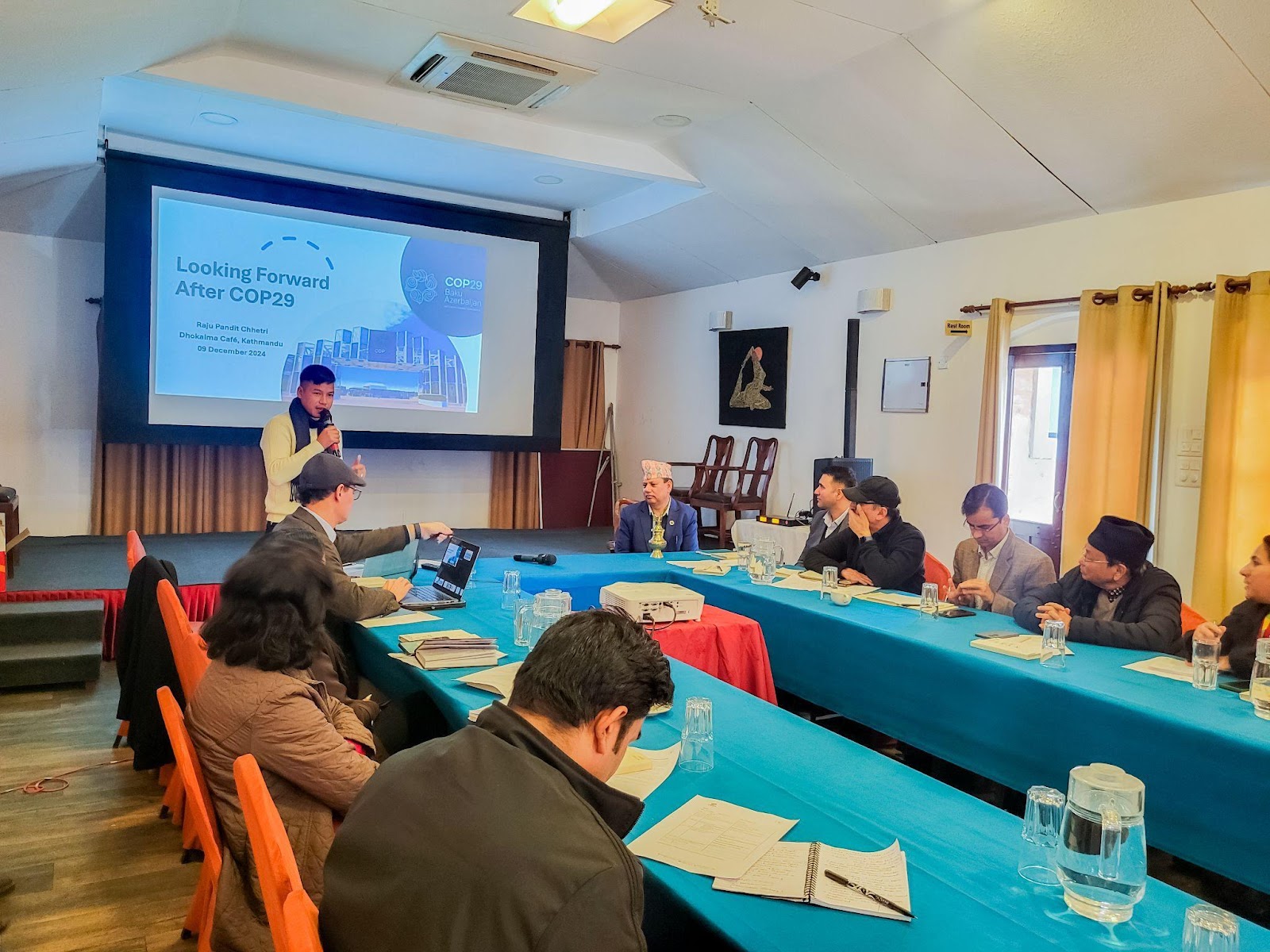
Photo 1: Prakash Lama, CEN, Welcoming the participation and setting up the context
In the opening remarks of the program agenda, Manjeet Dhakal, Climate Expert and Advisor to the Minister of MoFE provided a comprehensive overview of the outcomes from COP29 and Nepal's strategic engagement. He reflected on the conclusion of a 9-year-long carbon trade (Article 6.4 & 6.2) initiative at COP29, which opens new pathways for progress, even though its successful implementation is challenging in a long-term context. He also addressed the challenges around climate finance, acknowledging some positive steps but highlighting the lack of satisfactory outcomes in this critical area. On the part of mitigation, the UAE Consensus to subsidize the fossil fuel wasn’t discussed in the negotiation due to time bound which was passed for the next year to discuss on this agenda. Furthermore, Mr. Dhakal emphasized the need for research on climate change impacts across various sectors, underscoring the role of CSOs, NGOs, and academia in advocacy efforts. He concluded by mentioning the hearings in the International Court of Justice, in Hague, Netherlands championed by Pacific students, led by Vanuatu, where the Honorable Foreign Minister of Nepal is sharing the disproportionate impacts faced by Nepal. He viewed this case as a potential catalyst for amplifying the call for climate justice and urging major emitters to take responsibility for their emissions and support vulnerable countries in their climate efforts.
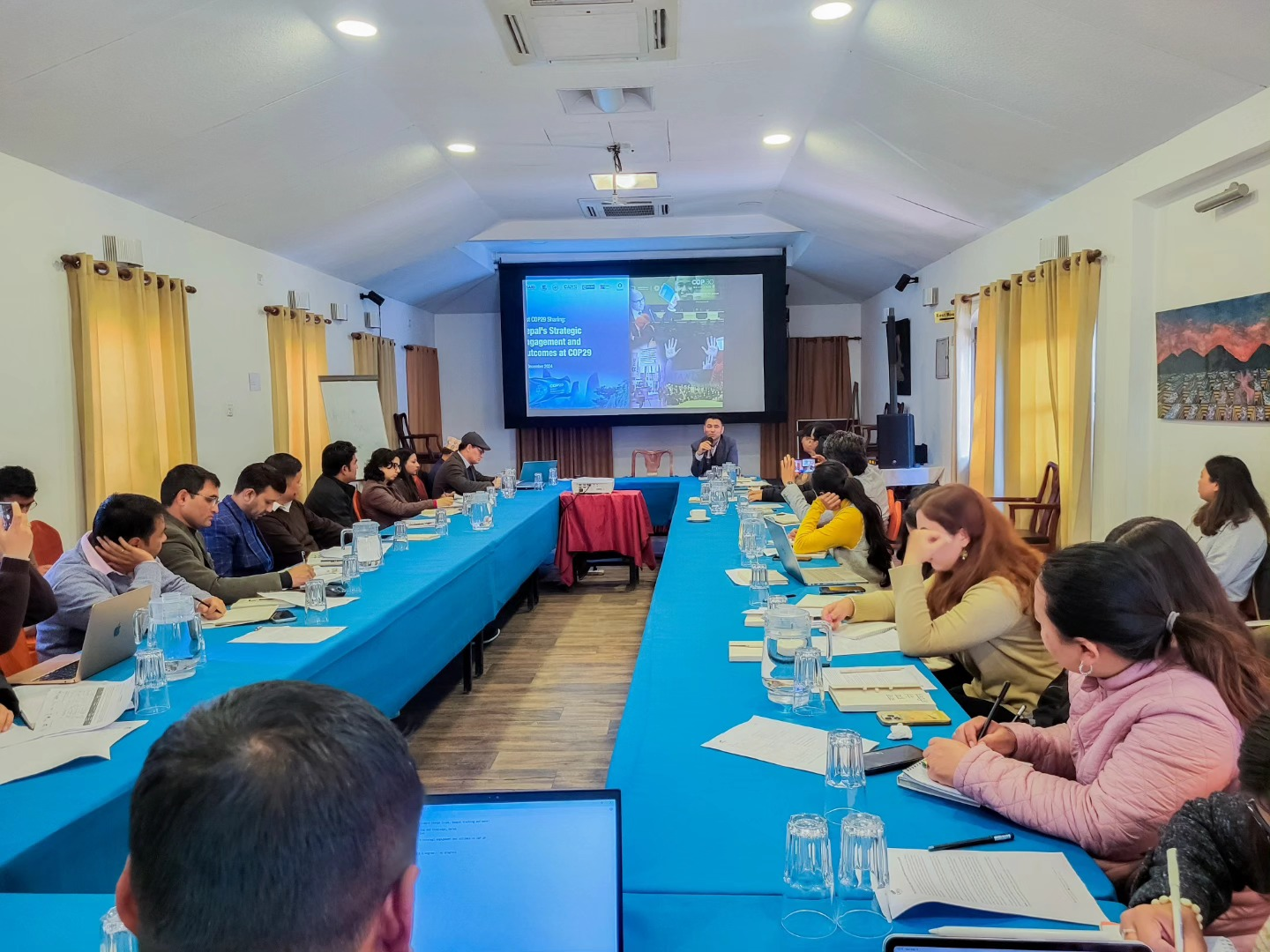

Photo: Manjeet Dhakal, Climate Expert and advisor to the Minister of MoFE, sharing the overview of the COP29 (focused on Mitigation)
The program commenced with a welcome speech and opening remarks by Dr. Sindhu Prasad Dhungana, Joint Secretary, MoFE. He emphasized Nepal's efforts to coordinate technical and political leadership in addressing climate change. Highlighting the importance of robust institutional frameworks, he pointed out gaps in preparedness and the need for collaborative approaches to maximize the nation's impact on the global stage.
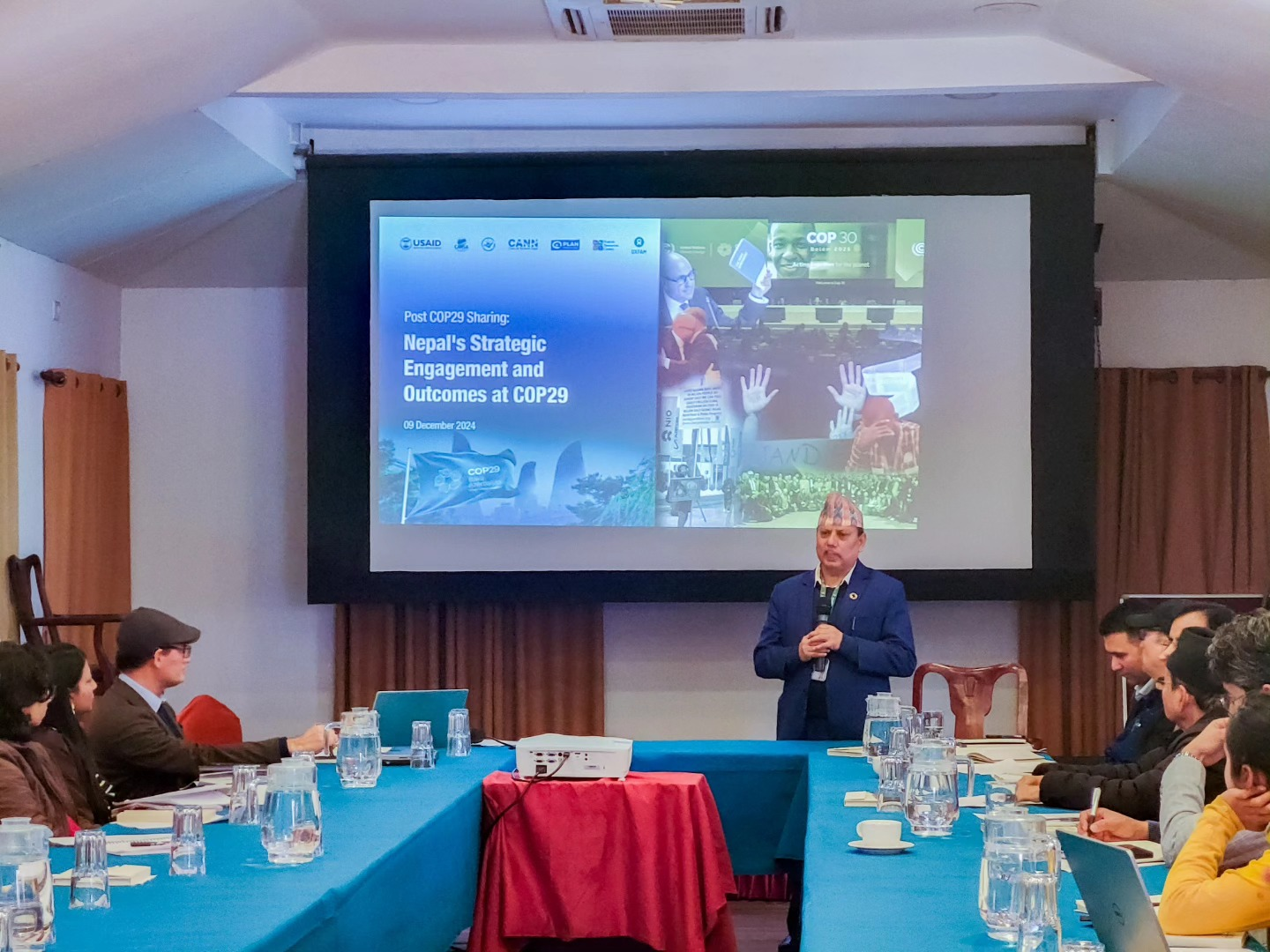
Photo: Dr. Sindhu Prasad Dhunghana, Joint Secretary, MoFE sharing Nepal’s participation in COP29, challenges, and way forward
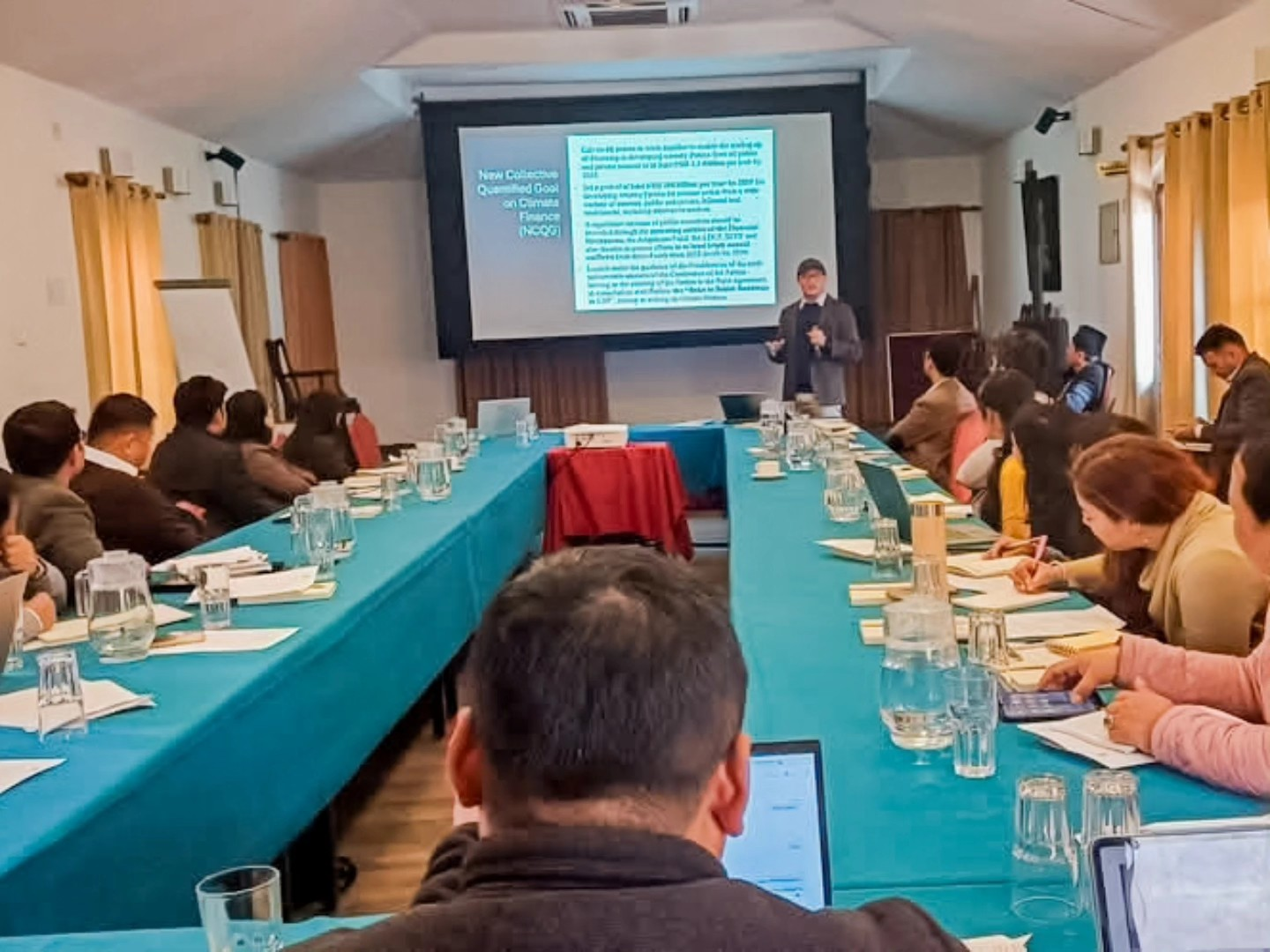
Photo: Raju Pandit Chhetri, Executive Director, PRC, sharing brief presentation of the COP29 Outcome and Finance (NCQG)
Raju Pandit Chhetri highlighted both progress and challenges in climate finance and Nepal’s negotiation preparedness at COP29. He discussed advancements under the New Collective Quantified Goal (NCQG), which aims to scale climate finance to USD 300 billion annually by 2035 and USD 1.3 trillion annually from diverse sources. However, he pointed out the ambiguity in defining climate finance and Nepal's difficulty in accessing funds due to its transition from LDC status and institutional gaps. Many smaller projects, crucial for local adaptation, are deprioritized due to funding thresholds.
He emphasized the importance of institutional strengthening to improve fund mobilization and governance, private sector engagement in adaptation and mitigation projects, and research to build evidence-based advocacy. He noted that Nepal's negotiation efforts were hindered by inadequate coordination, limited capacity, and the absence of a unified stance. While LDCs collectively demanded USD 220 billion annually, their voices were diluted due to a lack of strategic alignment.
To prepare for COP30, he recommended establishing a dedicated climate finance authority, fostering private-sector participation, and aligning national goals with global climate policies. He stressed the need for stronger collaboration across government, civil society, and academia to ensure Nepal’s effective participation in future negotiations. By addressing these gaps, Nepal can better secure resources and influence global climate action.
Thematic Outcome Sharing and Way Forward
The thematic outcomes sharing, successfully moderated by Shreya K.C., Policy Advisor at CEN, provided a dynamic platform for extracting maximum insights from thematic experts. The session encouraged open dialogue and allowed the audience to engage directly with experts on critical issues related to Nepal’s participation in COP29 and the way forward. The session also allowed for an in-depth exploration of Nepal’s challenges and opportunities in various thematic areas, including finance, adaptation, mitigation, gender, youth, and media engagement. Experts representing key thematic areas shared their perspectives, addressed challenges, and proposed actionable solutions to enhance Nepal's climate engagement.
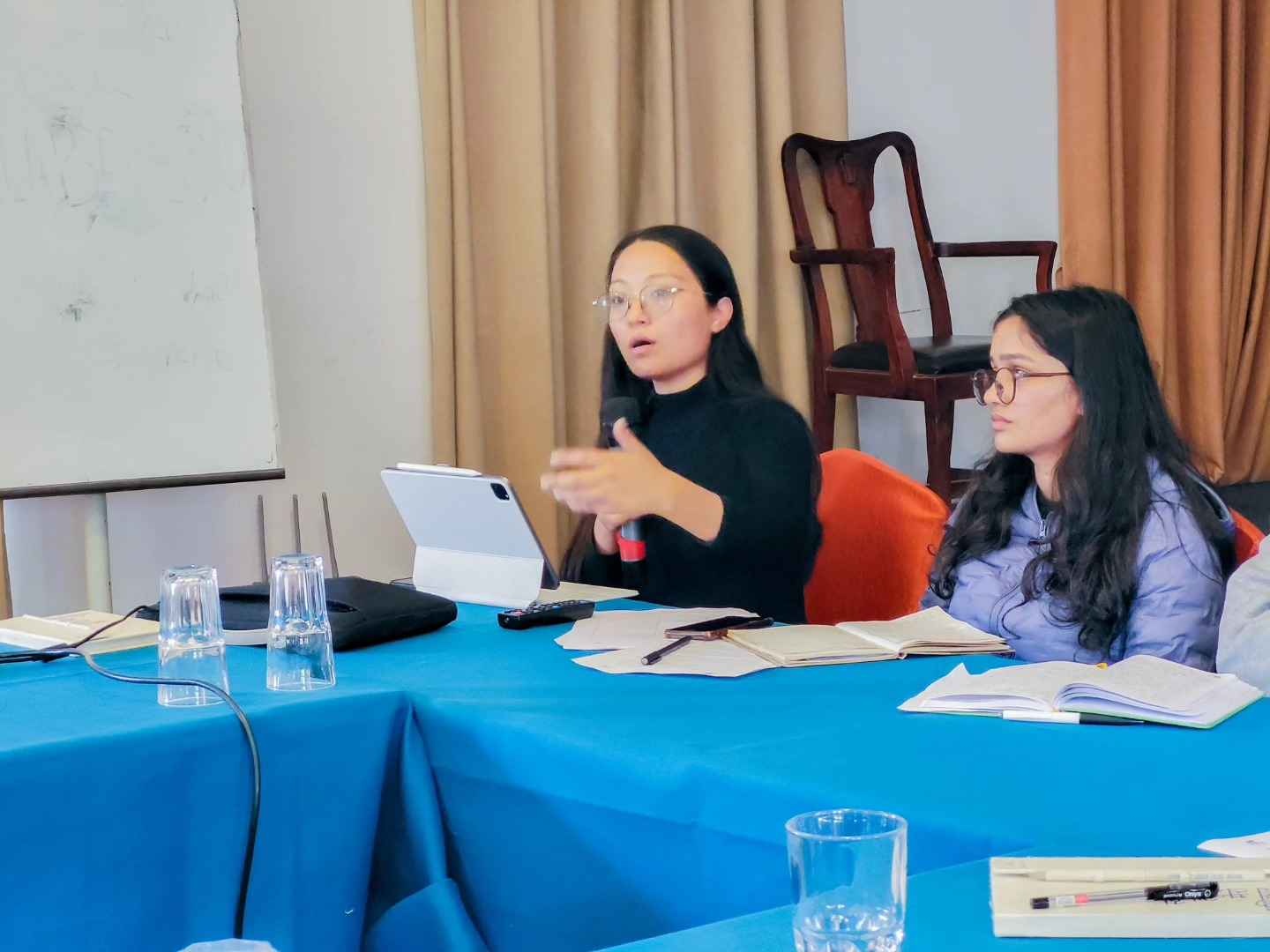
Photo: Shreya K.C., Policy Advisor, CEN, Facilitating the thematic sharing and discussion
Sandeep Chamling Rai, Global Lead-WWF Nepal, focused on adaptation and loss and damage, discussing progress on the Global Goal on Adaptation (GGA), which is set to finalize indicators by COP30. He highlighted the operationalization of the Santiago Network for Loss and Damage (SNLD), which supports vulnerable nations in addressing climate impacts.
Despite these developments, adaptation financing and loss and damage support remain inadequate. He emphasized transformative adaptation approaches that consider future climate scenarios and enhance resilience for both upstream and downstream communities. He also pointed out the need for integrating cultural, biodiversity, and translocation considerations into national adaptation strategies.
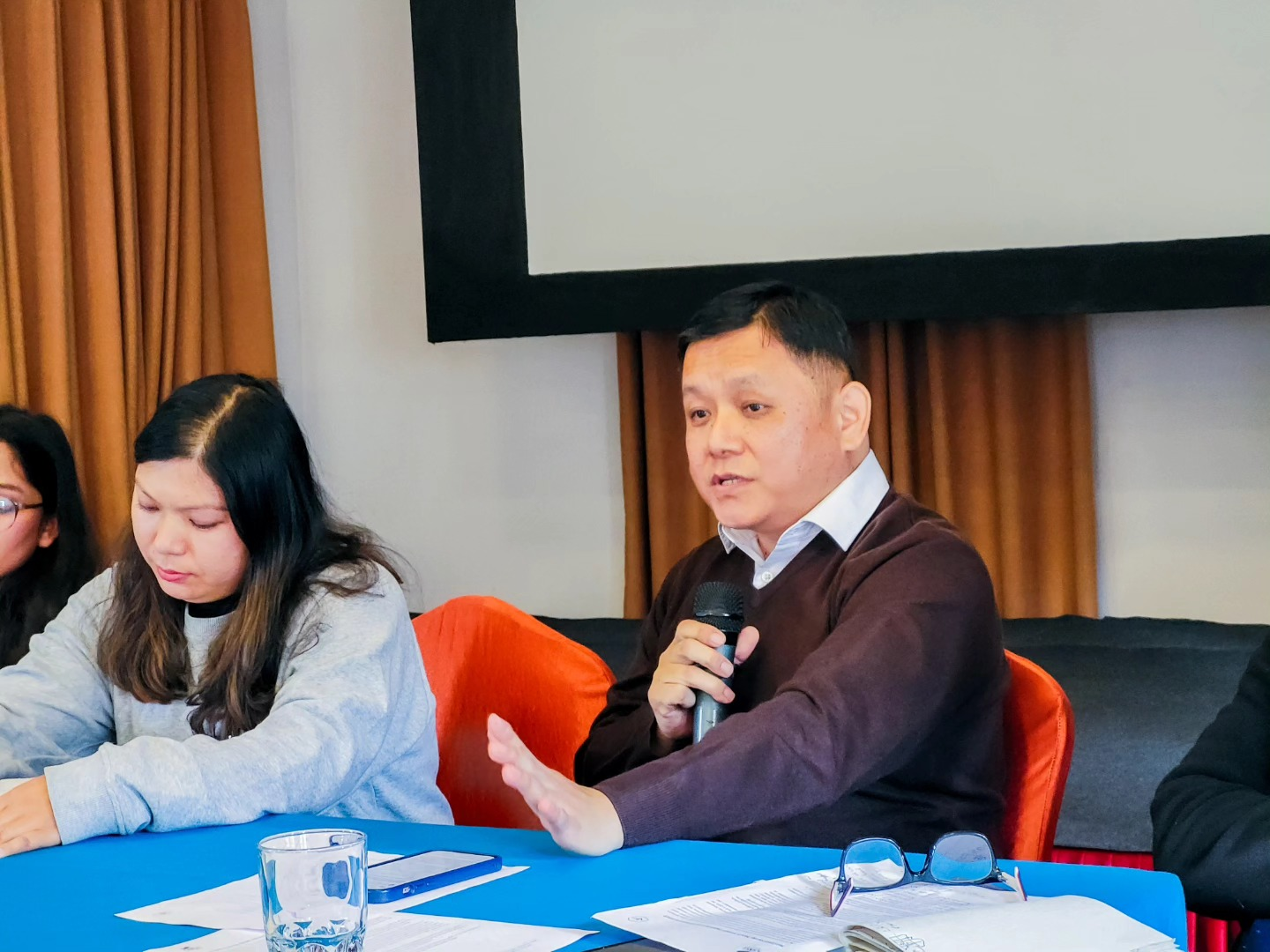
Photo: Sandip Chamling Rai (WWF Nepal), Sharing the response to the adaptation and loss & damage outcome
Rajan Thapa, WWF Nepal, shared the critical importance of accountability and transparency in addressing climate change, particularly in the context of the Baku Transparency Report and the Enhancing Transparency Framework (ETP). He highlighted the significant role these tools play in improving the transparency of climate actions and ensuring that all parties meet commitments. Mr. Thapa also pointed out key discussions at the event, focusing on the support needed for Least Developed Countries (LDCs) to build their capacity for transparency and accountability. He noted that the Standing Bodies (SB) must prioritize this support to help vulnerable nations align with global climate goals. Furthermore, Mr. Thapa emphasized that nations must submit their transparency reports by the established deadline of December, as outlined in the Biennial Reporting Templates (BRT). This, he stated, would not only strengthen global cooperation but also ensure that the efforts of all parties are transparent, measurable, and accountable.
Pragya Sherchan, Program Coordinator at PRC, discussed gender dimensions in climate action, emphasizing the extension of the Lima Work Program on Gender for another decade. While gender was recognized as a cross-cutting issue under the Global Goal on Adaptation, she pointed out the resistance from some countries, including Egypt and Saudi Arabia, which weakened discussions on gender-responsive climate finance.
She recommended incorporating gender into adaptation and finance indicators and strengthening advocacy efforts to ensure gender justice. Localizing global gender frameworks, such as the Lima Work Program, and engaging women in decision-making processes were identified as key priorities.
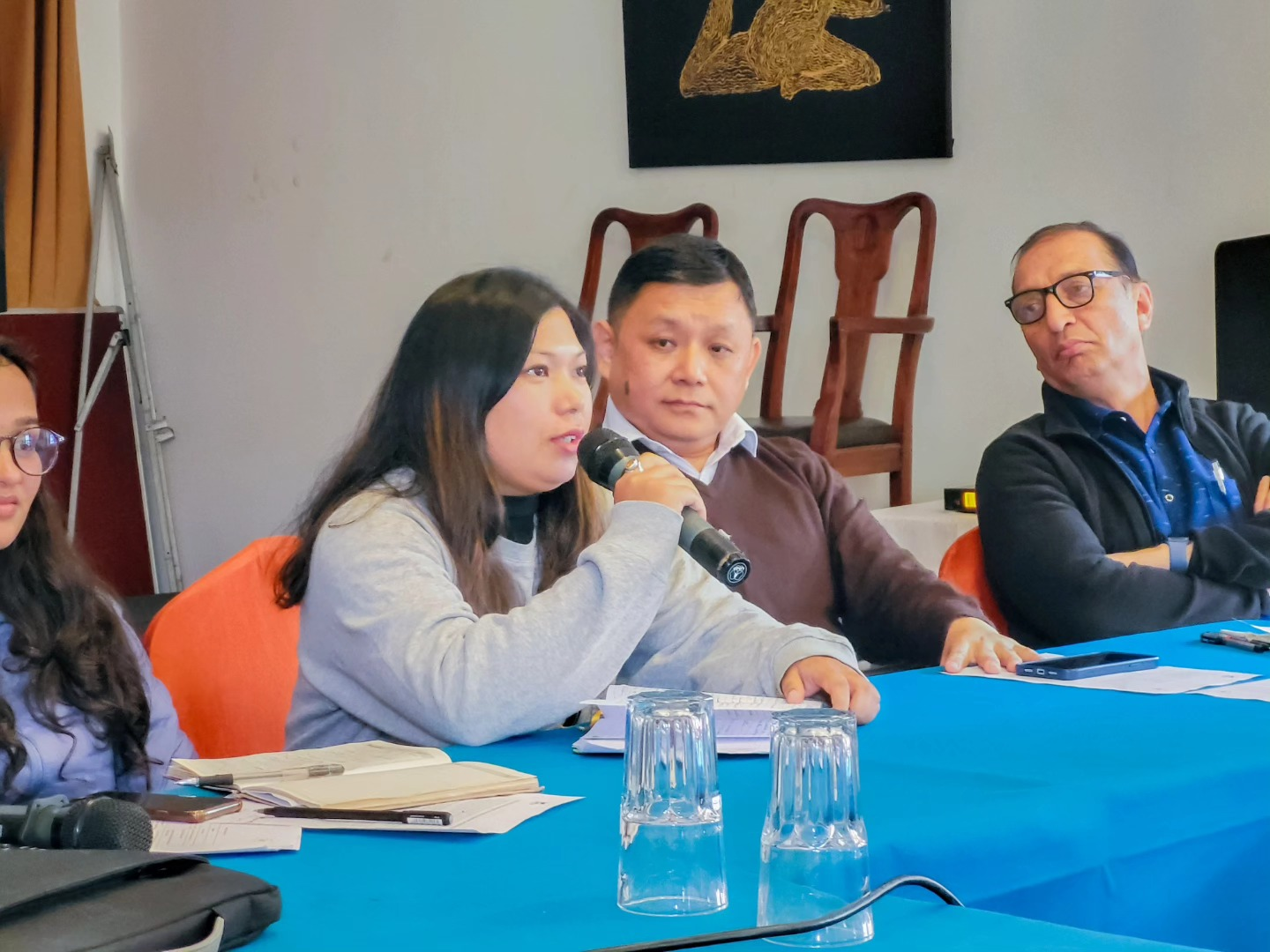
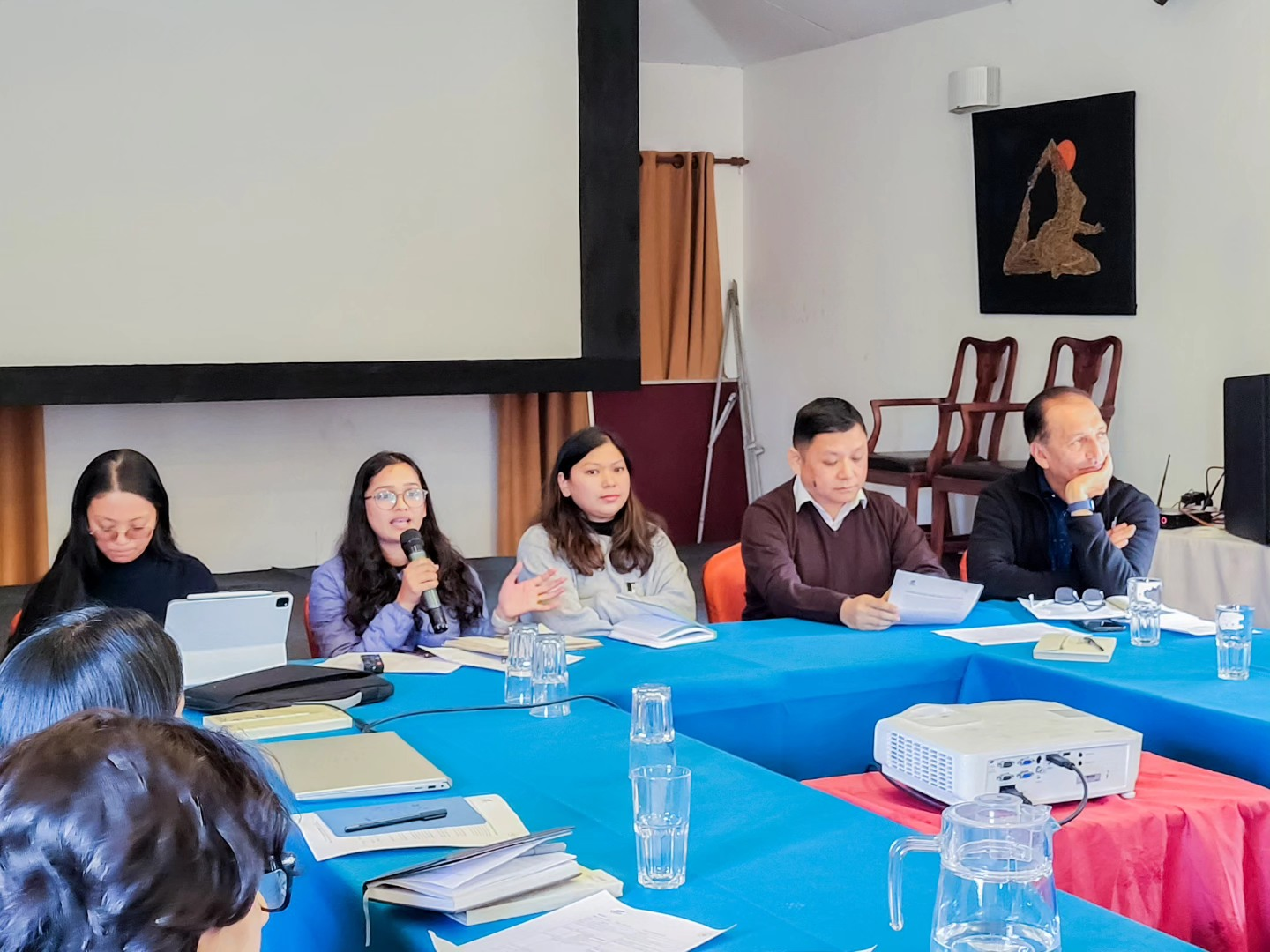
Photo: Pragya Sherchan (left) sharing a response to gender outcome and Aakriti Dotel (right) sharing the Nepalese youth engagement at COP29, challenges, and way forward
Akriti Dotel, Advocacy and Campaign coordinator at NYCA, reflected on youth engagement at COP29, where participation was largely limited to side events and networking. Youth representatives struggled to gain access to negotiation platforms, highlighting a gap in pre-COP capacity-building and resource mobilization.
She stressed the need for meaningful youth involvement in future COPs through training programs, grassroots outreach, and stronger connections between local initiatives and global advocacy. She also emphasized post-COP knowledge sharing to empower communities and amplify youth voices.
Shree Ram Subedi, a Journalist at NRM, highlighted the media’s role in shaping Nepal’s climate narrative. While media coverage of COP29 brought attention to Nepal’s participation, it often focused on peripheral issues rather than substantive outcomes. Subedi called for evidence-based reporting to amplify Nepal’s voice in global forums, promote transparency, and hold policymakers accountable.
He also noted the need for collaboration between media and stakeholders to disseminate climate science effectively and raise awareness of climate finance, adaptation, and mitigation priorities.
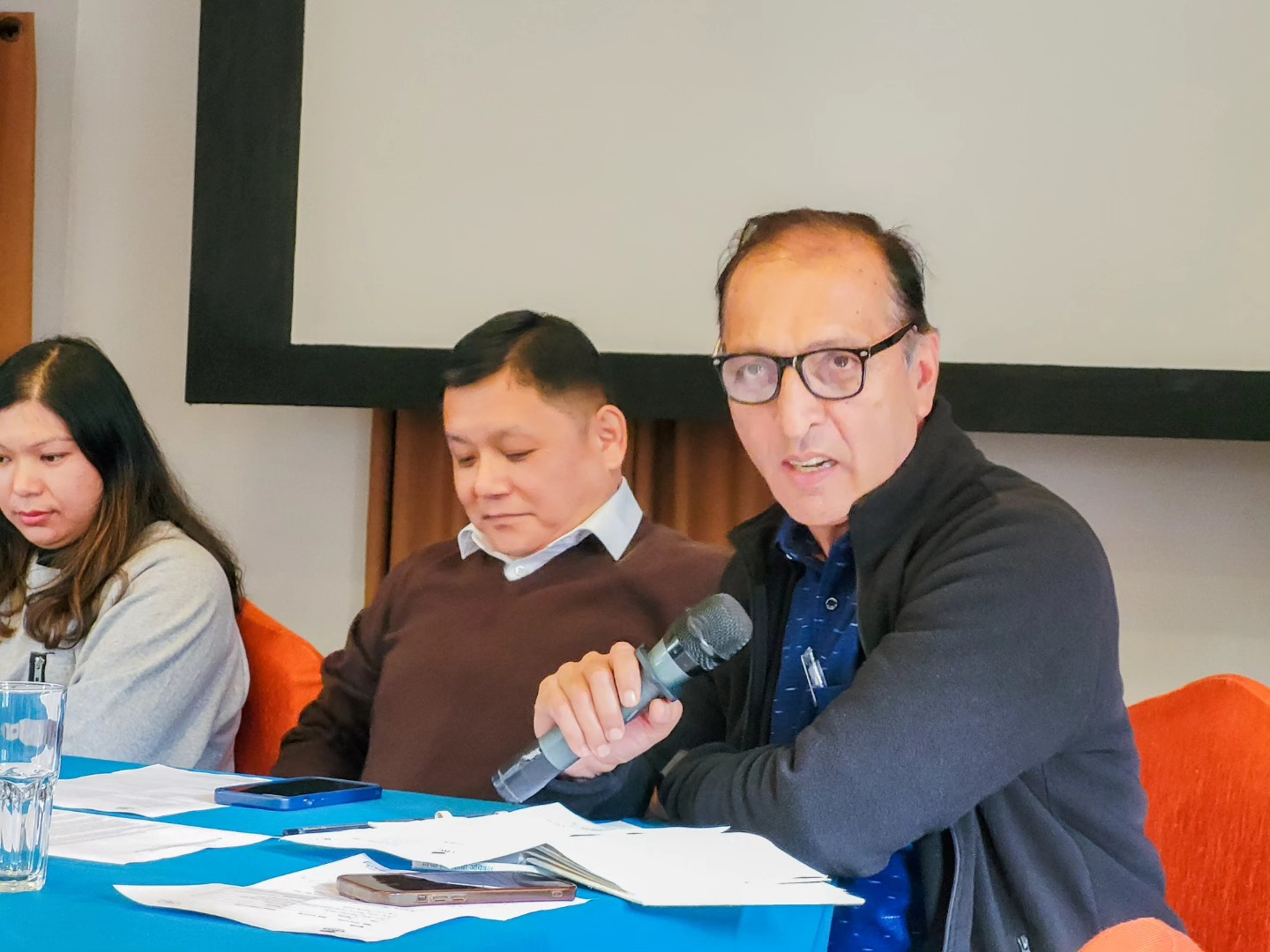
Photo: Shree Ram Subedi, Journalist, Response to the Media engagement at COP29, challenges and the way forward
Q&A Highlights
1. Climate Finance and Negotiation Preparedness
2. Adaptation and Loss & Damage
3. Gender Inclusion in Climate Action
4. Youth Engagement and Grassroots Connection
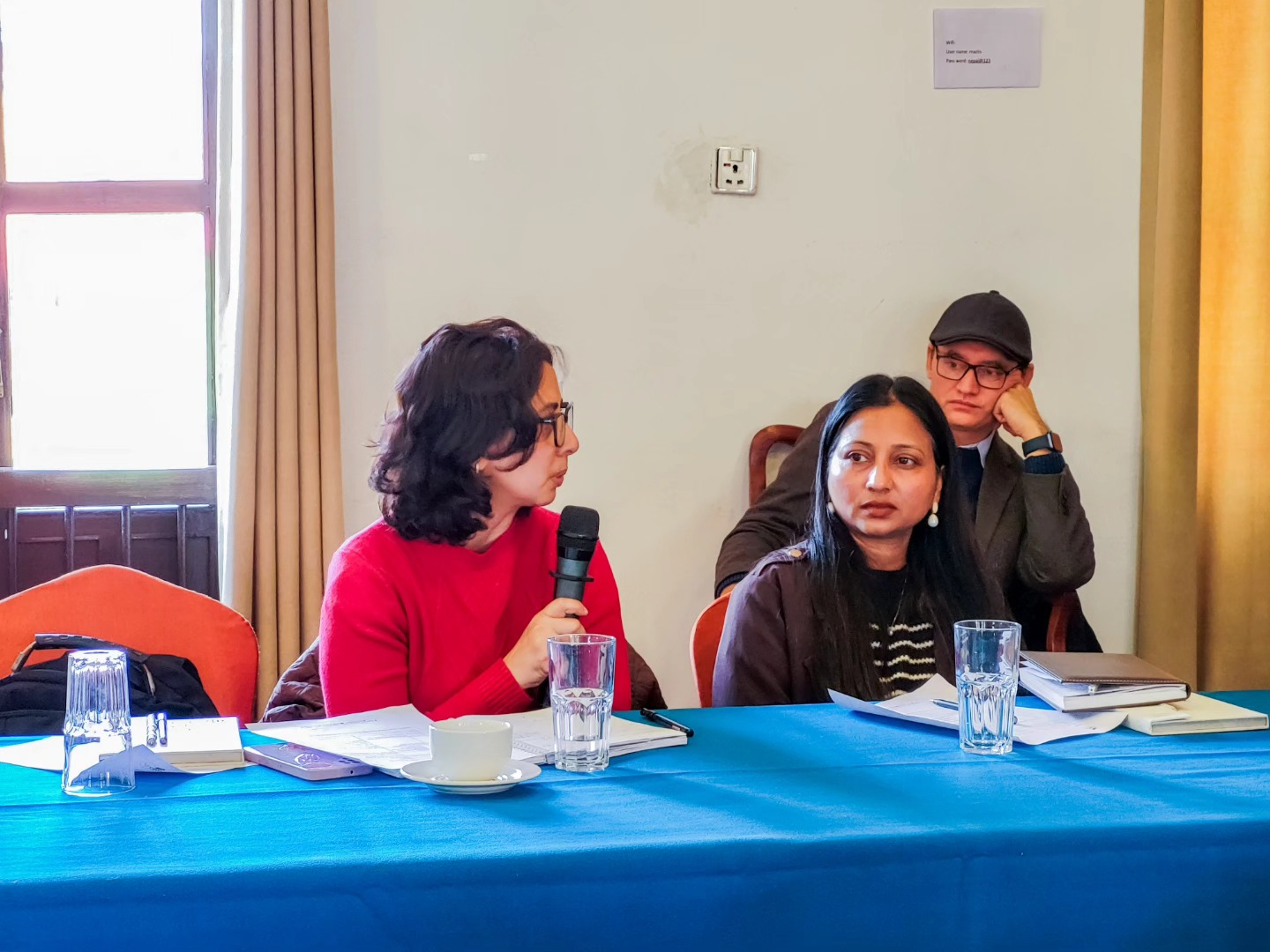
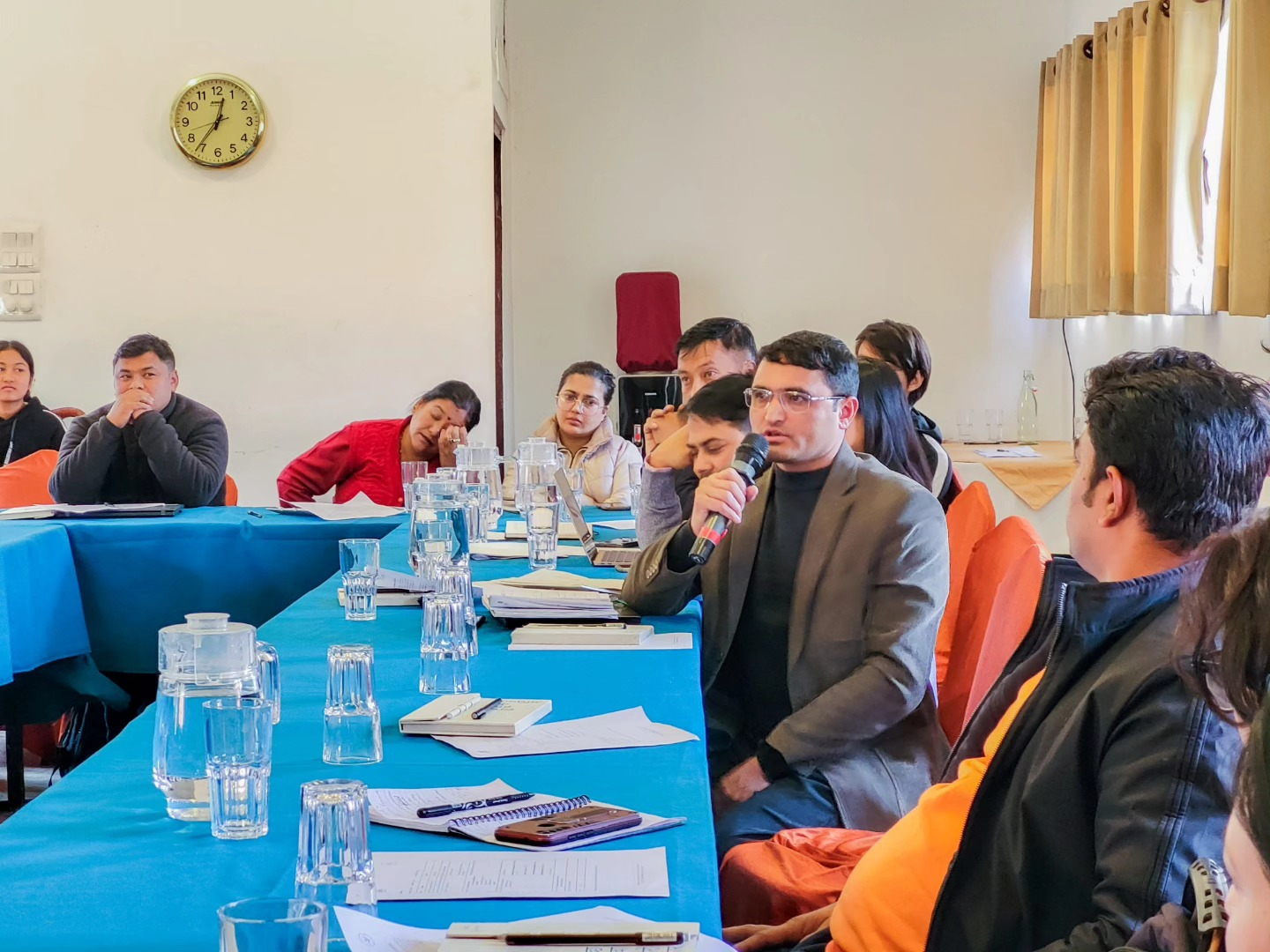
Photo: Questions from the floor
5. Role of Media and Transparency
6. Policy-Science Integration and Private Sector Engagement
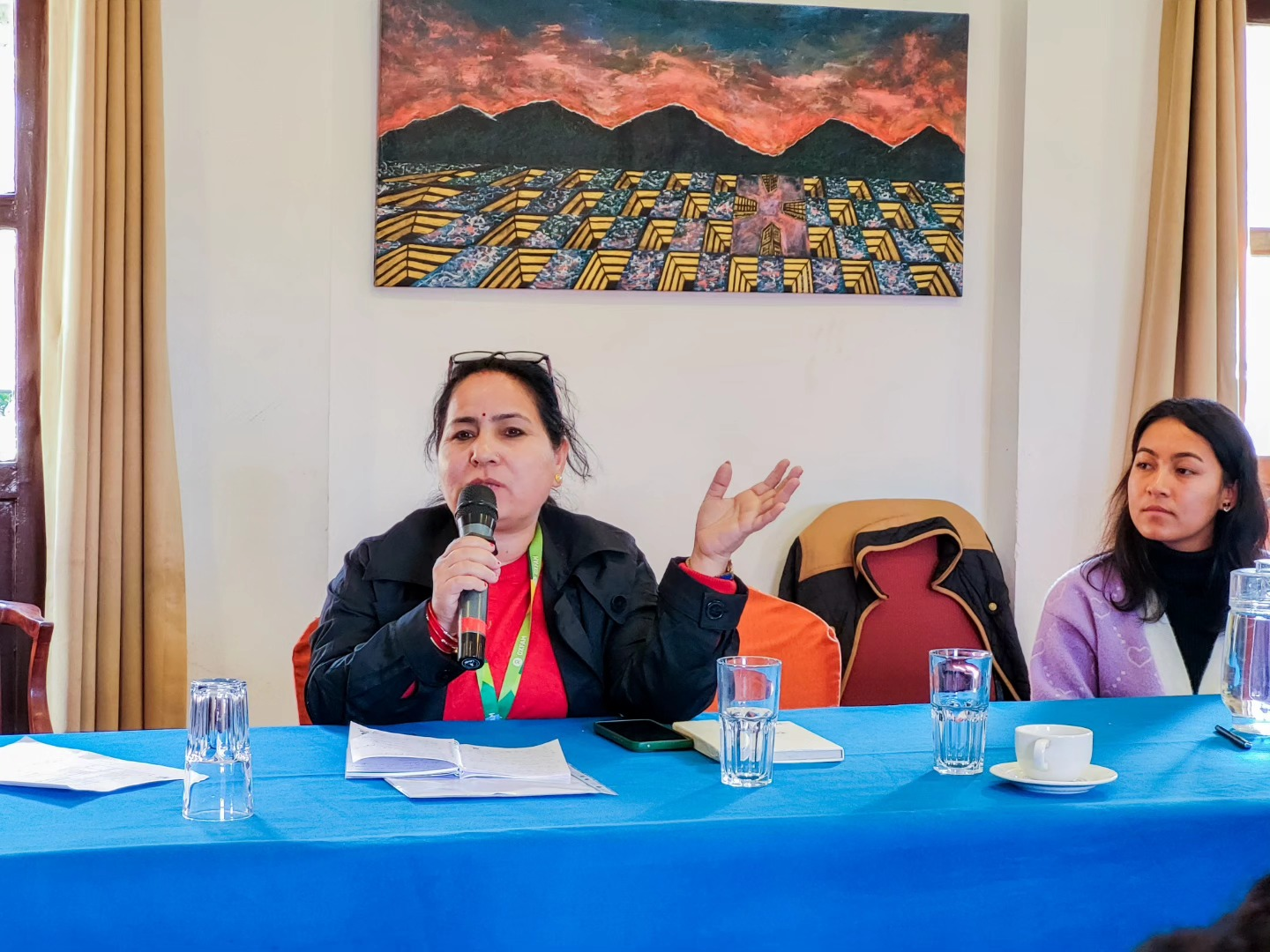
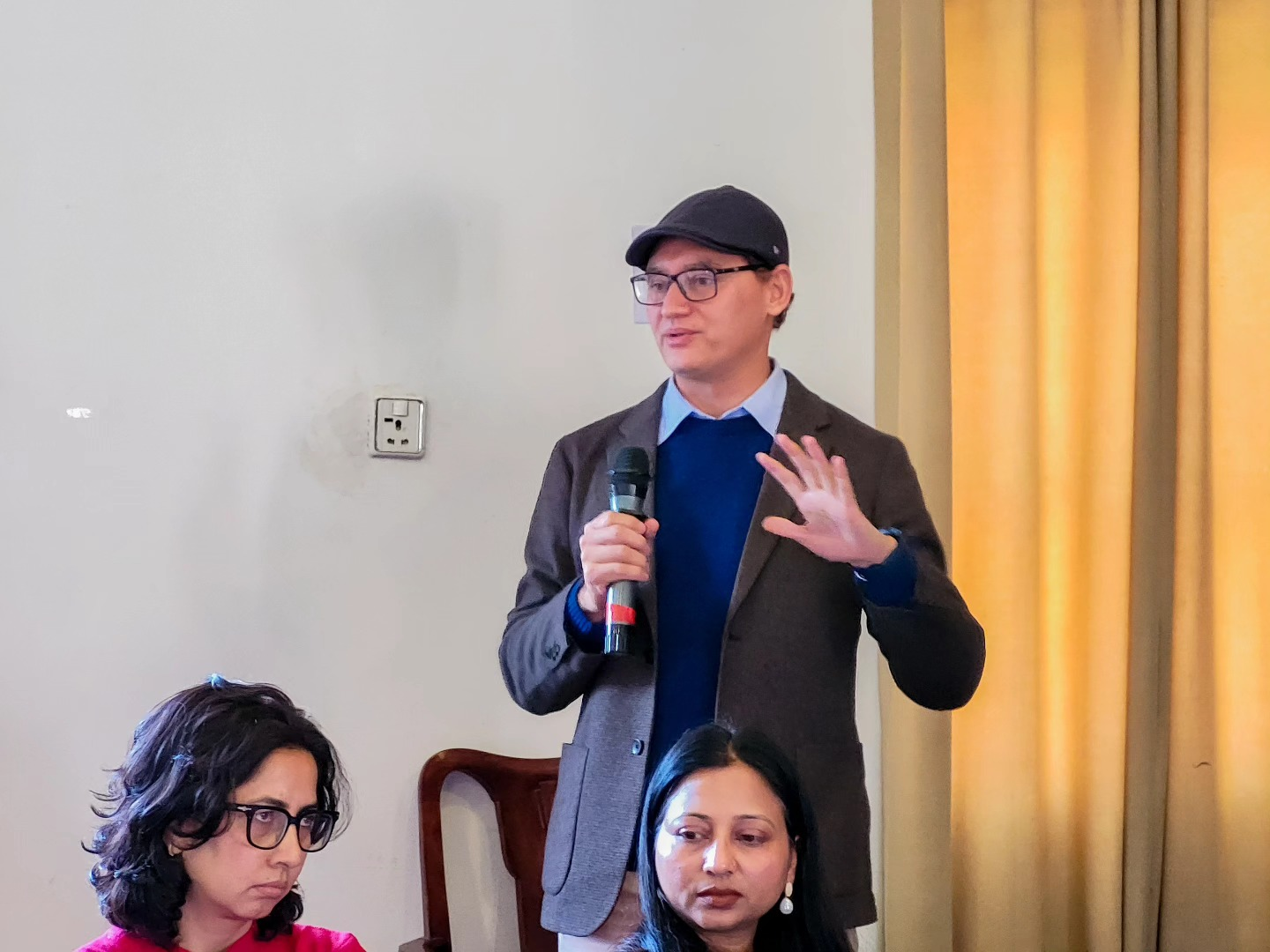
Photo: (Left) Shreedhari Pandey Questions from the floor & (right) Raju Pandit Chhetri responding to questions
Takeaway and Suggestions for COP30
The final session involved group discussions on lessons learned and recommendations for COP30 in Brazil. Participants stressed the importance of institutional reform, research-based advocacy, and strategic partnerships to strengthen Nepal’s position on climate finance, adaptation, and mitigation. The integration of mountain diplomacy into the global agenda was seen as a critical step for Nepal to assert its unique vulnerabilities and contributions.
The Post-COP29 Sharing Program highlighted significant achievements, such as advancements in carbon markets and climate finance frameworks, while identifying gaps in adaptation, gender inclusion, and youth participation. Moving forward, Nepal must focus on institutional strengthening, private sector engagement, and grassroots advocacy to effectively address its climate challenges and leverage global platforms for impactful action.
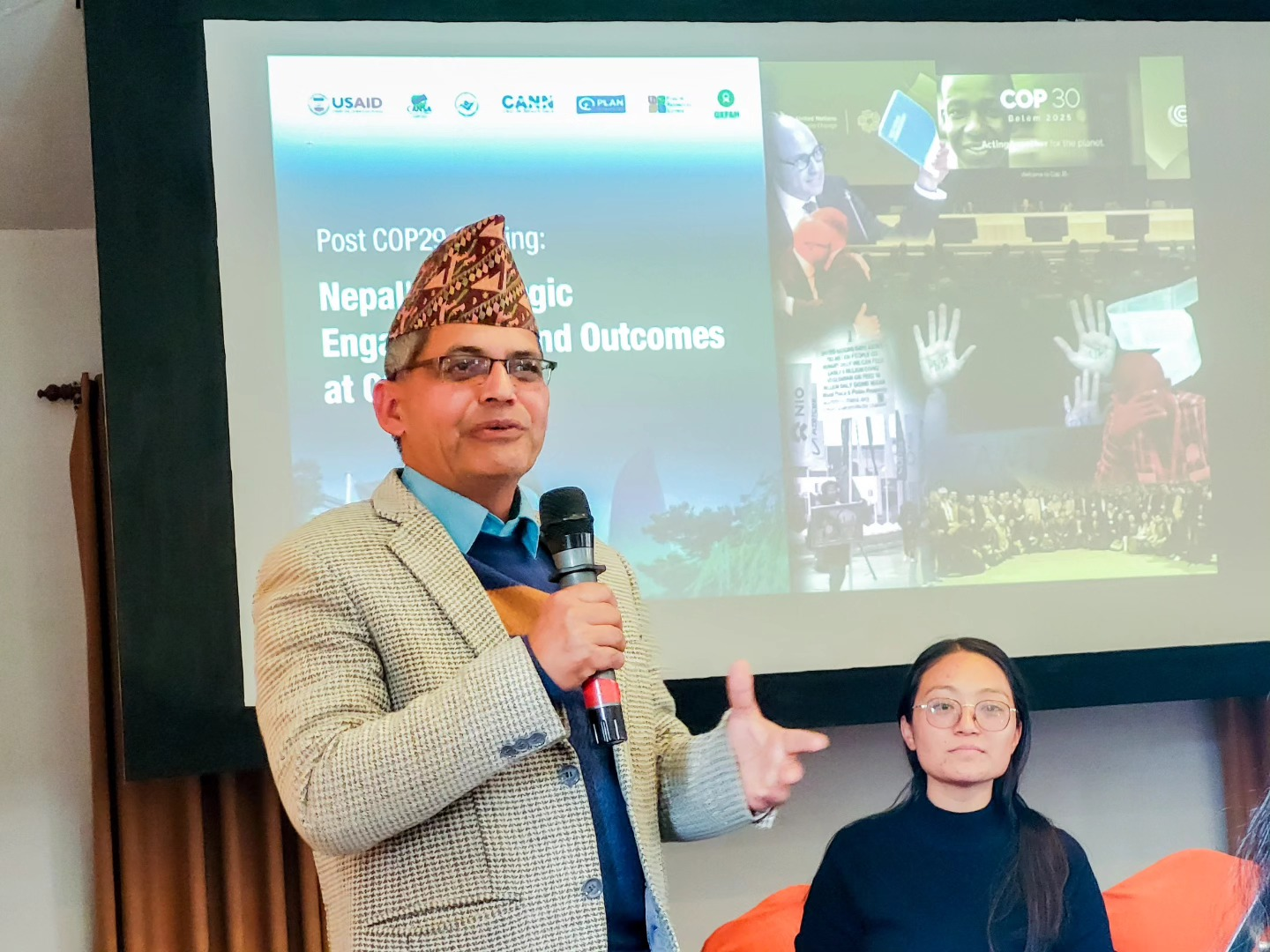
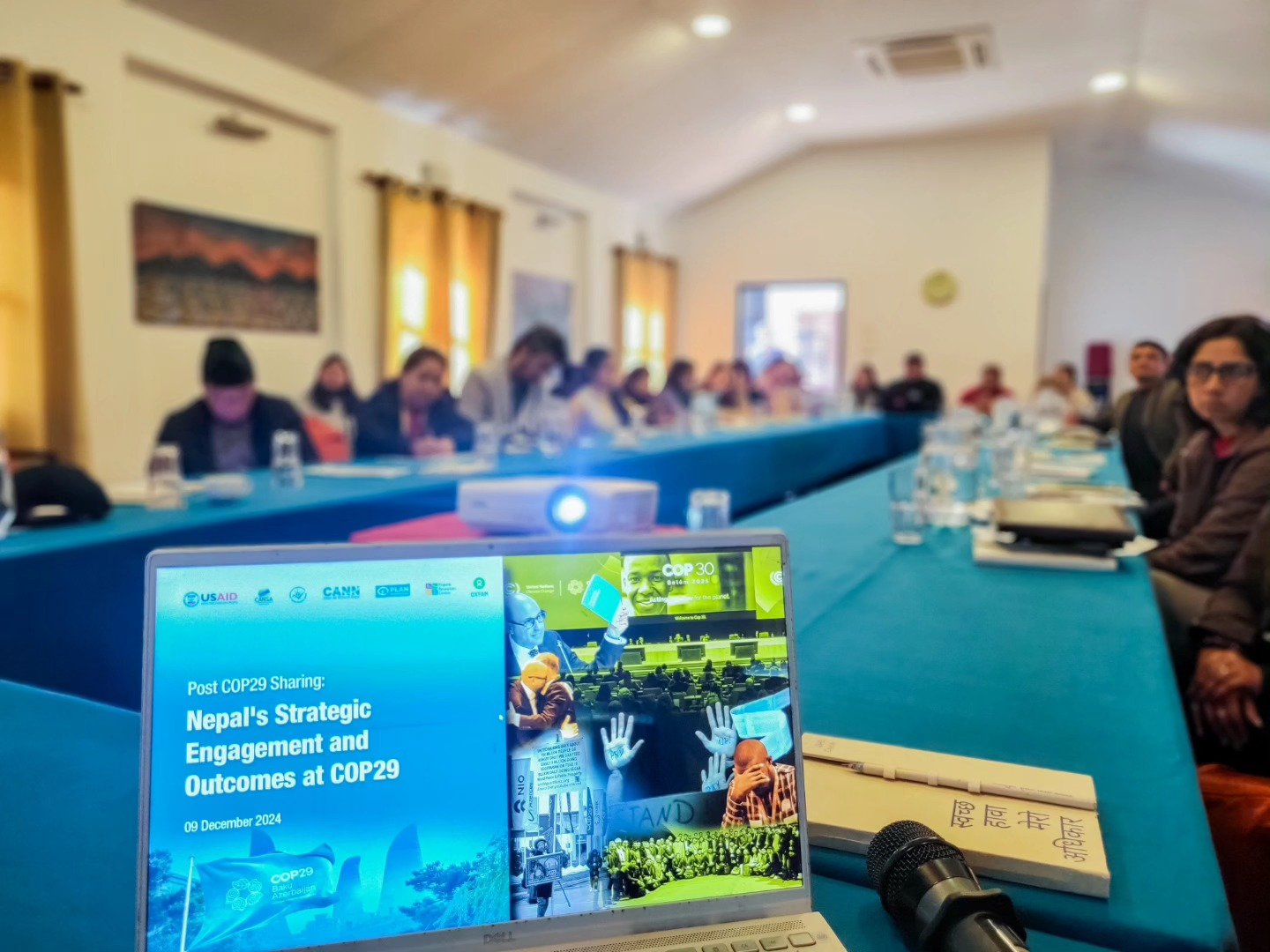
Photo: Namindra Dahal, (CANSA Nepal Board) Closing Remarks
Key Outcomes and way forward:
Outcomes
-
Highlighted Nepal’s strategic participation and achievements at COP29, including progress in climate finance and carbon market mechanisms.
-
Identified gaps in access to climate finance, institutional frameworks, and representation of youth and gender in climate action.
-
Fostered collaboration among government, civil society, academia, youth, and media to address climate challenges collectively.
-
Provided thematic insights and actionable recommendations for strengthening Nepal’s climate advocacy and negotiation preparedness.
-
Reinforced the importance of evidence-based advocacy, capacity-building, and grassroots engagement for impactful climate action.
Way Forward
-
Develop robust institutional frameworks to improve access to climate finance, operationalize carbon trading, and address loss and damage effectively.
-
Enhance negotiation preparedness through year-round capacity-building for negotiators, youths, and grassroots stakeholders.
-
Strengthen research initiatives and advocate evidence-based policies to support adaptation, mitigation, and biodiversity conservation.
-
Foster private sector participation in renewable energy, low-carbon development, and sustainable infrastructure projects.
-
Localize and implement gender-responsive and youth-inclusive climate action strategies to ensure equitable representation.
-
Leverage media for transparency, awareness, and advocacy to amplify Nepal’s voice in global climate forums.
-
Strategically align national policies with global climate goals, prioritizing mountain diplomacy and cohesive stakeholder collaboration for COP30.